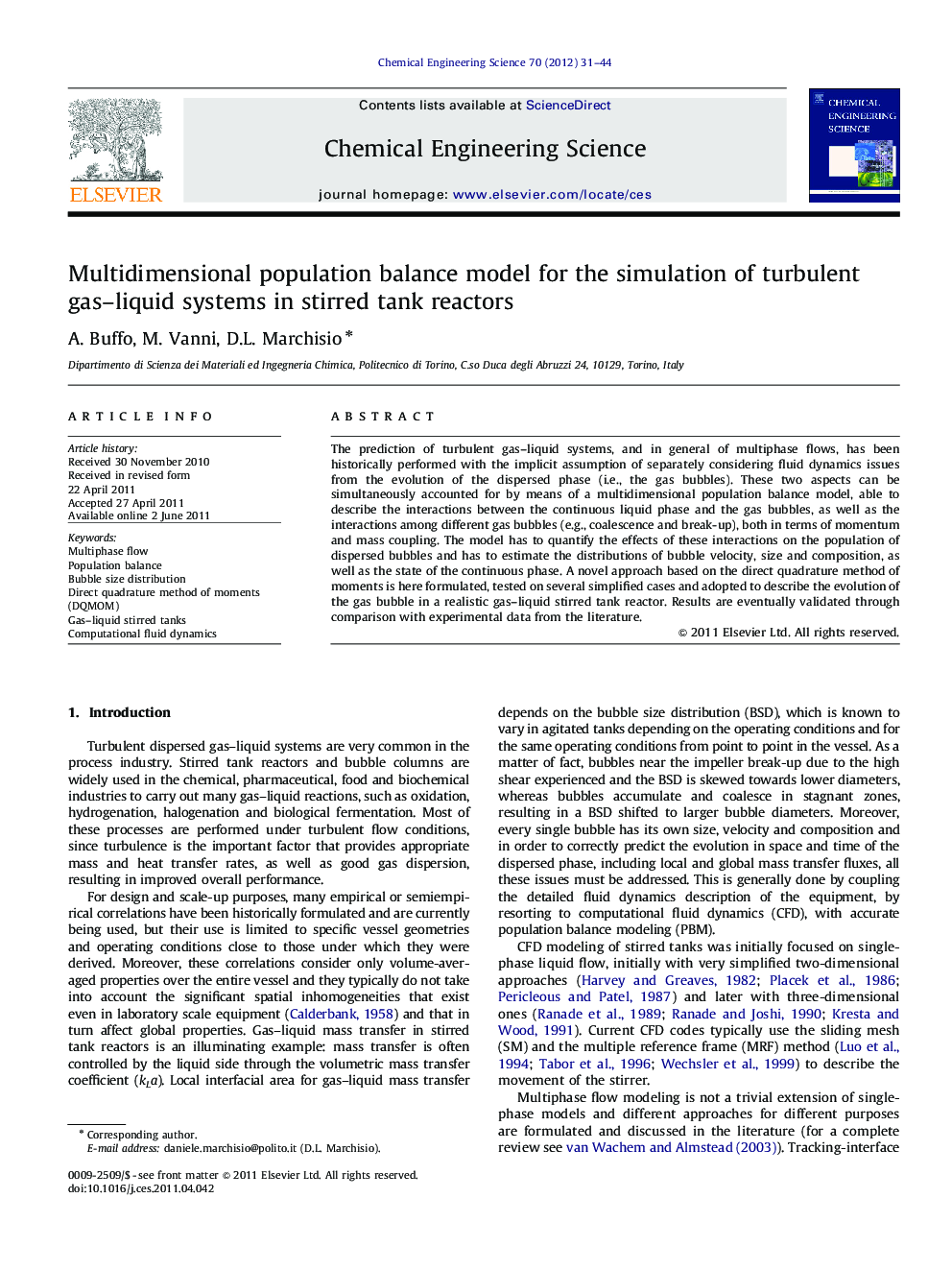| کد مقاله | کد نشریه | سال انتشار | مقاله انگلیسی | نسخه تمام متن |
|---|---|---|---|---|
| 155818 | 456912 | 2012 | 14 صفحه PDF | دانلود رایگان |

The prediction of turbulent gas–liquid systems, and in general of multiphase flows, has been historically performed with the implicit assumption of separately considering fluid dynamics issues from the evolution of the dispersed phase (i.e., the gas bubbles). These two aspects can be simultaneously accounted for by means of a multidimensional population balance model, able to describe the interactions between the continuous liquid phase and the gas bubbles, as well as the interactions among different gas bubbles (e.g., coalescence and break-up), both in terms of momentum and mass coupling. The model has to quantify the effects of these interactions on the population of dispersed bubbles and has to estimate the distributions of bubble velocity, size and composition, as well as the state of the continuous phase. A novel approach based on the direct quadrature method of moments is here formulated, tested on several simplified cases and adopted to describe the evolution of the gas bubble in a realistic gas–liquid stirred tank reactor. Results are eventually validated through comparison with experimental data from the literature.
► The use of DQMOM in CFD codes for multivariate population balances is investigated.
► The focus is on breakage, coalescence and mass transfer in gas–liquid systems.
► The internal coordinates tracked are bubble velocity, size and composition.
► Results show that DQMOM is capable of describing this complex problem.
► A correction for DQMOM related to numerical diffusion must necessarily be implemented.
Journal: Chemical Engineering Science - Volume 70, 5 March 2012, Pages 31–44